PH Coupler ZNDC — Technical Guide and Application Handbook
PH Coupler ZNDC is a one-way, zinc die‑cast pneumatic coupler engineered with an integrated automatic shut‑off valve for safe, efficient, and repeatable hose-to-tool connections in industrial compressed air, water, and oil systems. This article provides an in‑depth technical overview, specifications, design details, material and sealing guidance, application scenarios, comparative analysis, maintenance best practices, and selection recommendations to help engineers, maintenance personnel, and procurement specialists evaluate and deploy the PH Coupler ZNDC.
Introduction
Quick‑disconnect couplers are ubiquitous in industrial environments for connecting air hoses, pneumatic tools, lubrication lines, and other pressurized fluid systems. The PH Coupler ZNDC combines a robust zinc die‑cast (ZnDC) body, chrome plating, and an internal automatic shut‑off (auto close) valve to minimize fluid loss during disconnection while maintaining smooth mating and separation characteristics. Its one‑way design and material options (zinc die‑cast, steel, brass) make it a versatile choice across manufacturing, automotive, assembly lines, and general industrial maintenance applications.
This technical guide is targeted at engineers and technical buyers evaluating coupler solutions for compressed air, water, and light oil service at pressures up to 150 PSI (990 kPa). It explains how the PH Coupler ZNDC functions, provides detailed specifications and dimensions, compares it to other coupler types, and gives practical installation and maintenance advice to maximize service life and safety.
Technical Overview
Function and Principle of Operation
The PH Coupler ZNDC is a one‑way quick‑disconnect coupling featuring an integrated automatic shut‑off valve (also referred to as a poppet or check valve) in the coupler body. When a compatible plug (nipple) is inserted, it depresses the internal valve, allowing fluid to flow through the coupler. When the plug is removed, the valve closes automatically, minimizing pressure and fluid loss from the system and reducing the risk of accidental discharge.
Key mechanical elements include:
- Coupler body: Zinc die‑cast (ZnDC) construction with chrome plating for corrosion resistance and smooth surface finish.
- Internal poppet valve: Spring‑loaded valve element that seals against a bore to prevent flow when disconnected.
- Seals: Elastomeric O‑rings or lip seals (typically NBR for general use) providing fluid tightness.
- Locking mechanism: Sleeve or notch system that retains the plug when engaged and allows quick release.
One‑Way vs Two‑Way Couplers
The PH Coupler ZNDC is specified as a one‑way coupler — meaning the automatic shut‑off is located in the coupler body (socket) such that disconnecting the plug shuts off flow at the coupler side. This topology is especially useful when you want to isolate equipment or tool lines so that the downstream line remains depressurized when a tool is disconnected. In contrast, two‑way couplers (both plug and socket with valves) can provide isolation on both sides and sometimes reduce pressure spikes during connection/disconnection. Selecting one‑way vs two‑way depends on system topology and safety requirements.
Fluid Compatibility and Operating Envelope
The PH Coupler ZNDC is designed for use with compressed air, water, and light oils. Its stated working pressure and temperature ranges are:
- Working pressure: 0–150 PSI (0–990 kPa)
- Working temperature: 32–140°F (0–60°C)
Seal material selection (NBR, EPDM, or FKM/Viton) should be matched to the fluid type and operating temperature to avoid premature seal failure or fluid incompatibility issues. See the Materials and Seal Guidance section for recommendations.
Specifications and Dimensions
The PH Coupler ZNDC is available in three nominal models tailored to common hose inner diameters and flow requirements. The following tables present technical attributes for the standard variants. Unless otherwise specified, dimensions are nominal and may vary slightly depending on thread options and manufacturing tolerances.
| Model | Hose Bore (mm) | Typical Thread/Port Options | Nominal Flow (Cv) | Working Pressure | Temperature Range | Typical Weight |
|---|---|---|---|---|---|---|
| PH 20 | 9.5 mm (3/8″) | 1/4″ NPT / 1/4″ BSPP | 0.9 | 0–150 PSI (0–990 kPa) | 32–140°F (0–60°C) | approx. 40 g (0.088 lb) |
| PH 30 | 11 mm (7/16″) | 3/8″ NPT / 3/8″ BSPP | 1.6 | 0–150 PSI (0–990 kPa) | 32–140°F (0–60°C) | approx. 60 g (0.13 lb) |
| PH 40 | 15 mm (5/8″) | 1/2″ NPT / 1/2″ BSPP | 3.0 | 0–150 PSI (0–990 kPa) | 32–140°F (0–60°C) | approx. 110 g (0.24 lb) |
Notes on the specification table: Cv (flow coefficient) values are typical engineering estimates that reflect the relative flow capacity between the models—actual Cv should be validated by supplier test data for critical flow calculations. Thread/port options are commonly offered; customers may specify alternative connection adaptors or integrated hose barbs.
Materials and Build Quality
Body Material: Zinc Die‑Cast (ZnDC)
The PH Coupler ZNDC body is manufactured from a zinc die‑cast alloy (commonly Zamak family alloys such as Zamak 3 or Zamak 5). Zinc die‑cast alloys are widely used for couplers because they provide:
- Good dimensional stability and repeatable tolerances from die casting.
- High strength-to-cost ratio for moderately loaded components.
- Excellent machinability for secondary operations such as internal bores and threads.
- Reliable surface finishing: chrome plating provides corrosion resistance, reduced galling, and a smooth exterior for low friction during mating.
Typical zinc die‑cast composition (for reference) is approximately 94–96% Zn with small additions of Al, Mg, and Cu. The exact alloy and heat treatment influence hardness and mechanical properties; consult supplier data sheets for specific alloy grade information.
Alternate Body Materials: Steel and Brass
In addition to the zinc die‑cast core, the PH Coupler ZNDC is available in steel and brass variants to suit demanding environments:
- Steel variants: Provide higher impact resistance, improved tensile strength, and better performance where mechanical abuse is expected. Steel bodies may be plated (zinc, nickel) for corrosion resistance; stainless steel is used in highly corrosive or hygienic environments but is typically offered as a separate family of couplers.
- Brass variants: Offer excellent corrosion resistance to water and oils and improved sealing compatibility with certain fluids. Brass is commonly used in plumbing, marine, and petroleum environments.
Plating and Coatings
Chrome plating on the zinc die‑cast surface provides a hard, wear‑resistant finish with enhanced resistance to abrasion and moderate corrosion protection. Typical plating thickness for decorative and light protective chrome plating is in the single‑ to low‑double‑digit micrometer range. Where stronger corrosion protection is required, passivation or nickel plating options may be specified.
Seals and Internal Components
Elastomer seals are critical for maintaining leak‑free performance and long service life. Typical default materials include:
- Nitrile Rubber (NBR/Buna‑N): Standard choice for compressed air and most oils; good mechanical properties at ambient temperatures.
- EPDM: Preferred when water or steam exposure is common; poor compatibility with petroleum oils.
- FKM (Viton): High temperature and chemical resistance for aggressive fluids and higher temperature operations (if required).
Internal springs and poppet components are typically stainless or plated spring steel for fatigue resistance; their surface finish and tolerances determine the smoothness of mating/unmating cycles and valve sealing performance.
Key Features
The PH Coupler ZNDC combines a number of engineered features designed to meet industrial requirements for reliability, speed, and safety:
- Integrated Auto Shut‑Off Valve: Minimizes fluid and air loss at disconnection and isolates downstream lines for safer, cleaner operation.
- One‑Way Operation: Prevents backflow and ensures depressurization of tool lines when disconnected.
- Zinc Die‑Cast Construction: Balances cost and performance—durable under normal industrial use and amenable to chrome plating for improved wear and corrosion resistance.
- Multiple Material Options: Steel and brass variants provide flexibility for harsher mechanical or corrosive environments.
- Standard Port Sizes: Offered in common thread sizes (1/4″, 3/8″, 1/2″) for easy integration with existing lines and fittings.
- Smooth Engagement and Release: Designed tolerances and internal poppet geometry reduce coupling force and minimize rebound or pressure spikes.
- Interchangeability: Compatible with many industry‑common plugs and nipples, enabling retrofit in existing systems (verify interchangeability with supplier data).
- Chrome Finish: Improves aesthetics, resists moderate corrosion, and reduces friction on external surfaces.
Use Cases and Applications
The PH Coupler ZNDC is engineered for general industrial use across several sectors. Typical use cases include:
Manufacturing and Assembly Lines
Assembly plants and production lines commonly use pneumatic tools (impact wrenches, grinders, staplers). PH Coupler ZNDC enables easy tool changes and automatic shut‑off when tools are disconnected, reducing wasted compressed air and helping maintain consistent line pressure.
Automotive Repair and Maintenance
Garage and maintenance operations require durable couplers to connect air ratchets, impact guns, blow guns, and paint spray equipment. The zinc die‑cast body and chrome finish provide abrasion resistance while the auto‑shut‑off prevents oil mist or compressed air discharge to the work area during tool swaps.
General Industrial Fluid Distribution
Beyond compressed air, PH Coupler ZNDC may be used in non‑aggressive water or light oil lines (e.g., lubrication circuits) where automatic isolation at disconnection is desirable. When used with the proper seal material (EPDM for water, NBR or FKM for oils), the coupler functions reliably in varied maintenance tasks.
Workshop and Tooling Stations
Fixture and jig lines in machine shops often require quick tool changes and intermittent supply. The one‑way shut‑off preserves the downstream setup and prevents inadvertent pressurization of hoses when a tool is detached.
Comparison with Similar Products
To aid selection, the following table compares the PH Coupler ZNDC against several common coupler types: standard zinc quick couplers without a shut‑off valve, brass couplers, and stainless steel two‑way couplers. The comparison focuses on attributes relevant to procurement and engineering decisions.
| Attribute | PH Coupler ZNDC (ZnDC, auto shut‑off) | Standard Zinc Coupler (no auto valve) | Brass Coupler (auto valve) | Stainless Steel Two‑Way Coupler |
|---|---|---|---|---|
| Auto Shut‑Off | Yes (one‑way) | No | Yes | Yes (often two‑way) |
| Body Material | Zinc die‑cast, chrome plated | Zinc die‑cast | Brass | Stainless steel (316/304) |
| Corrosion Resistance | Moderate (plated) | Low‑moderate | High | Very high |
| Mechanical Strength | Moderate | Moderate | Moderate | High |
| Cost | Competitive | Lower | Higher | Highest |
| Typical Applications | General industrial, workshop, air/water/oil | Low‑cost tool hookups | Water lines, marine, corrosion‑prone areas | Chemical, food, marine, high‑corrosion environments |
Summary of comparison: PH Coupler ZNDC offers a cost‑effective balance of automatic shut‑off functionality and build quality for general industrial environments. Brass or stainless options should be chosen where corrosion resistance or specific fluid compatibility is required. If both sides of the connection must isolate automatically, consider two‑way couplers or matching plug/ socket valve configurations.
Benefits and Limitations
Benefits
- Reduced Fluid Loss: Auto shut‑off valve prevents air, water, or oil loss when the plug is removed, improving energy efficiency and workplace cleanliness.
- Safety: Automatic isolation of lines reduces risk of accidental hose whip or uncontrolled discharge during tool changes.
- Cost‑Effective Durability: Zinc die‑cast with chrome plating provides mechanical integrity at a lower cost point compared to stainless steel.
- Easy Integration: Standard thread and hose size options facilitate retrofit into existing systems.
- Low Friction Engagement: Engineered internal poppet geometry and quality seals enable smooth coupling/un‑coupling with minimal operator force.
Limitations
- Corrosion Sensitivity: Zinc die‑cast is less corrosion resistant than brass or stainless steel; in highly corrosive or coastal environments, brass or stainless variants are recommended.
- Temperature Limits: Standard seal materials and die‑cast body limit continuous operation to approximately 60°C (140°F); high‑temperature service requires upgraded seals and materials.
- Not for Abrasive or Particulate Fluids: Presence of solid particulates or highly abrasive fluids can accelerate wear on the poppet and seals, leading to leakage.
- Interchangeability Caveat: While designed to fit industry‑common plugs, interchangeability should be verified against the specific standard or vendor part to prevent mis‑mating.
Selection and Application Recommendations
Choosing the right PH Coupler ZNDC model and material depends on operating parameters and environment. Use the following checklist when specifying couplers:
- Operating Fluid: Air, water, or oil. Choose seal compounds accordingly (NBR for air/oil, EPDM for water, FKM for aggressive oils/higher temperatures).
- Pressure and Flow Requirements: Confirm system pressure does not exceed 150 PSI. For higher flow needs, choose PH 30 or PH 40 models with higher Cv.
- Environmental Conditions: For corrosive or outdoor conditions, select brass or plated steel variants, or stainless steel if severe corrosion is present.
- Compatibility: Verify thread type (NPT vs BSPP), plug/nipple standard, and mating geometry to ensure leak‑free connections.
- Safety Requirements: If both sides must isolate automatically, consider two‑way systems or couplers with shut‑off valves in both plug and socket.
- Temperature Range: Ensure seal material is rated for continuous use at the expected temperature range.
Installation and Commissioning Guidance
Proper installation ensures performance and longevity. Follow these technical guidelines for installing PH Coupler ZNDC:
- Inspect Parts Before Installation: Check for foreign debris, casting flash, or damage to threads and seals.
- Thread Preparation: Use appropriate thread sealant or PTFE (Teflon) tape on tapered threads (NPT). For BSPP (parallel) threads, use a sealant on the mating face or a bonded washer as required by the installation standard.
- Tightening Torque: Tighten threaded connections to recommended torque values for the specified thread size and material. Avoid over‑torquing which can crack die‑cast threads—use a calibrated torque wrench where possible. As a general guide, 1/4″ NPT into die‑cast body is often tightened to 8–12 N·m (71–106 in·lb); confirm with supplier guidance.
- Orientation: Avoid sharp kinks in hoses near the coupler; provide strain relief and support to reduce mechanical stress on the coupling.
- Initial Leak Test: Pressurize the system gradually and apply a leak test solution at connections. Inspect for bubbles and retighten if necessary.
- Seat Plug Correctly: Ensure mating plug is fully inserted until the locking mechanism engages to avoid partial engagement that could lead to internal leakage or poppet damage.
Maintenance and Care Guide
Regular maintenance preserves safety and extends service life. The PH Coupler ZNDC requires straightforward preventative tasks that can be incorporated into scheduled maintenance programs.
Daily / Weekly Checks
- Visually inspect couplers for obvious damage, corrosion, or signs of leakage.
- Check that coupler sleeves operate smoothly and return to closed position when released.
- Listen for air leaks while system is pressurized—address leaks immediately to prevent energy waste.
Monthly Maintenance
- Disassemble a representative sample of couplers and plugs for inspection of internal poppets and seals.
- Clean internal bores and seals with a mild solvent compatible with seal material (avoid harsh solvents for NBR/EPDM/FKM unless approved).
- Replace O‑rings or lip seals showing cracks, flattening, or extrusion damage. Seal replacement intervals depend on duty cycle but plan for 6–12 month inspection in heavy use.
Annual Service
- Perform a full inventory of all couplers in the facility. Replace units with excessive wear, corrosion, or repeated leakage.
- Verify spring and poppet function—weak springs can cause slow bleed or partial shut‑off; replace worn internal components.
- Update maintenance records and track mean time between failures (MTBF) to optimize replacement schedules.
Repair and Spare Parts
Maintain an inventory of spare seals, springs, and a small number of complete couplers for rapid replacement. When replacing seals, use manufacturer‑specified materials and dimensions to ensure correct sealing pressure and longevity.
Cleaning and Chemical Exposure
Do not expose the coupler to strong acids, alkalis, or aggressive solvents that attack zinc or elastomers. For cleaning paint residue or grease, use manufacturer‑approved cleaners or water with mild detergents. If couplers are exposed to oils, ensure seal material compatibility—NBR is common but may swell when exposed to certain synthetic fluids.
Troubleshooting Guide
| Problem | Possible Causes | Recommended Actions |
|---|---|---|
| Persistent leak at coupler | Damaged O‑ring, worn poppet seat, debris in bore | Depressurize, disassemble, clean bore, replace O‑ring/poppet if damaged |
| Difficulty mating plug | Corrosion, deformation of sleeve, misaligned threads | Inspect sleeve and plug for damage; clean and lightly lubricate moving parts with compatible lubricant |
| Air loss when disconnected | Faulty shut‑off valve, weak spring, worn seal | Replace internal valve components (poppet, spring, seal); verify part numbers |
| Coupler sticking or slow sleeve return | Contamination, rust, insufficient lubrication | Clean internal components and lubricate moving parts with manufacturer‑approved lubricant; replace corroded parts |
Seal Material Selection and Chemical Compatibility
Selecting the correct elastomeric seal material is essential for reliable performance. The following table outlines typical compatibility for the most used seal materials:
| Seal Material | Best For | Not Recommended For |
|---|---|---|
| Nitrile (NBR / Buna‑N) | Compressed air, mineral oils, general pneumatic service | Hot water/steam, strong acids, ketones (acetone), aromatic hydrocarbons |
| EPDM | Water, steam (low pressure), glycol solutions | Hydrocarbons, fuels, mineral oils |
| FKM (Viton) | High temperature, many oils, fuels, aggressive chemicals | Low temperature extremes below material glass transition (depends on grade) |
When in doubt, consult chemical compatibility charts and validate in representative conditions. For mixed or unknown fluids, favor more chemically resistant elastomers such as FKM.
Performance Considerations and Engineering Notes
Pressure Drop and Sizing
Flow capacity (Cv) is a useful metric for sizing couplers in pneumatic systems. The PH Coupler ZNDC models have nominal Cv values that reflect their internal bore and poppet geometry. For systems where pressure drop is critical (long hose runs, high flow demands), select the smallest acceptable pressure drop by choosing a larger coupler (PH 30 or PH 40) or minimizing flow restrictions downstream.
Basic flow relation (air at ambient conditions, idealized):
Q = Cv × sqrt(ΔP / ρ) (engineers should use standard pneumatic flow calculators and manufacturer Cv curves for precise design)
Always use measured Cv values from the manufacturer for precise pneumatic system calculations; the values provided here should be treated as approximate for selection guidance only.
Fatigue and Cycle Life
The mechanical cycle life of the coupler is determined by the quality of the sleeve, internal spring, and poppet interface. Zinc die‑cast materials in high cycle applications may show wear faster than machined steel or stainless steel equivalents. For high cycle or abusive environments, specify the steel or stainless variants and consider reinforced sleeve designs.
Temperature Effects
Operating near the upper temperature limit (60°C/140°F) increases the likelihood of accelerated seal degradation and oxidation. Consider selecting higher‑temperature seals (FKM) or alternative materials if the environment regularly exceeds the standard operating temperature.
Regulatory and Safety Considerations
Installations should comply with relevant workplace safety regulations for pneumatic systems, including lock‑out/tag‑out procedures during maintenance and ensuring rated pressure relief devices are installed upstream of couplings in pressurized systems. Couplers used in hazardous fluid service (flammable or hazardous chemicals) must be evaluated for electrostatic discharge risk, material compatibility, and applicable industry standards. When integrating couplers into compressed air systems for breathing air or medical applications, ensure coupler materials and lubricants are compliant with the applicable standards and purity requirements.
Ordering and Customization Options
Common ordering options and customizations for the PH Coupler ZNDC typically include:
- Body material: ZnDC (chrome), steel (plated), brass
- Port/thread type: 1/4″ NPT, 3/8″ NPT, 1/2″ NPT, BSPP equivalents
- Seal compound: NBR, EPDM, FKM
- Hose barb or threaded coupler end
- Special coatings or passivation for improved corrosion resistance
- Matched plug/nipple sets or bulk packaged couplers for assembly line use
When placing orders, specify the model number, material, port configuration, seal material, and quantity to obtain accurate lead times and pricing. For OEM requirements, verify dimensional drawings and tolerance pack to ensure integration compatibility.
Case Study: Implementing PH Coupler ZNDC in a Vehicle Assembly Facility
Background: An automotive assembly plant wanted to reduce compressed air losses and improve tool change efficiency. The existing couplers were low‑cost zinc couplers without shut‑off valves, leading to continuous leakage at disconnected tool points and significant energy waste.
Solution: The plant replaced tool line couplers with PH Coupler ZNDC (PH 30) using NBR seals and 3/8″ NPT ports to match existing air drops. A phased replacement was scheduled during planned maintenance windows. Technicians were trained on the proper coupling procedure and routine checks.
Results:
- Measured reduction in compressed air consumption of 6–8% attributable to decreased flow from disconnected tools.
- Quicker tool changeover times due to smoother coupling action and automatic shut‑off preventing operator delays in isolating lines.
- Reduced onsite oil/oil mist contamination from tool disconnections and less frequent cleanup operations.
Key lessons learned included the importance of seal material choice (NBR was adequate for oil‑lubricated tools) and proactive inventory of replacement seals to maintain uptime.
Conclusion
The PH Coupler ZNDC is a versatile, cost‑effective one‑way coupler optimized for general industrial use with compressed air, water, and light oils. Its zinc die‑cast body, chrome plating, and integrated automatic shut‑off valve deliver smooth mating, controlled disconnection behavior, and reduced fluid loss at tool interfaces. For most workshop and factory applications up to 150 PSI and 60°C, PH Coupler ZNDC provides reliable performance when matched with appropriate seal materials and installed with proper torque and maintenance practices.
When selecting couplers, evaluate operating fluid compatibility, environmental corrosion risk, flow requirements, and potential need for two‑way isolation. For aggressive environments or very high cycle installations, consider steel, brass, or stainless alternatives. Following the installation, maintenance, and troubleshooting guidance in this document will help ensure long operational life and minimize unplanned downtime.
If you require detailed drawings, validated Cv test data, material certificates, or custom porting options for integration into a design, contact your supplier or technical representative with your system specifications, expected duty cycle, and fluid details.
Keywords: PH Coupler ZNDC, pneumatic coupler, zinc die‑cast coupler, auto shut‑off, quick disconnect, compressed air coupler, hose coupler, industrial coupler.

 Tiếng Việt
Tiếng Việt
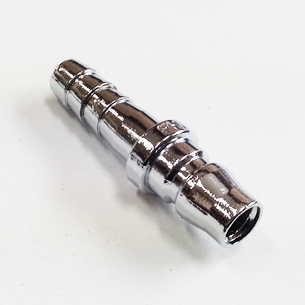
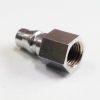
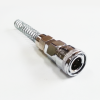
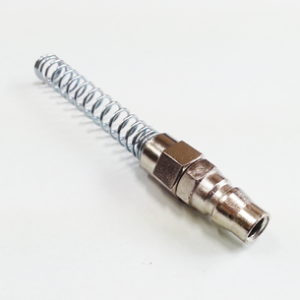
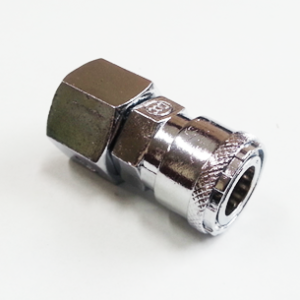
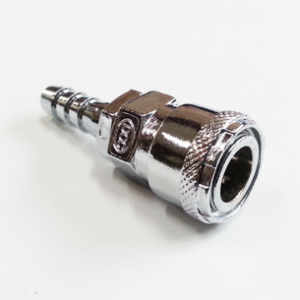
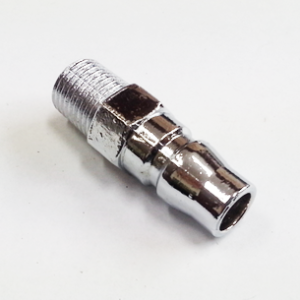
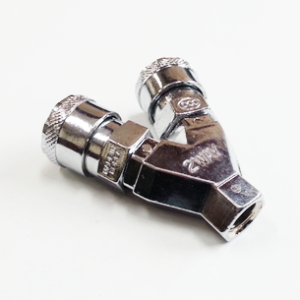
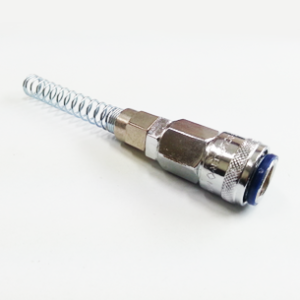
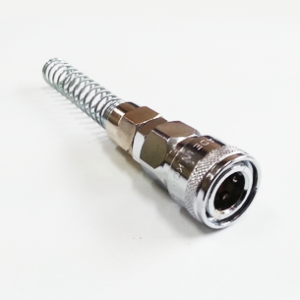
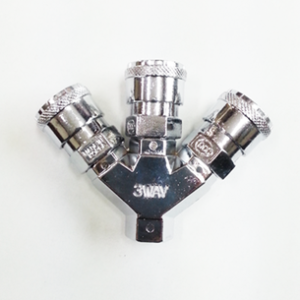
Reviews
There are no reviews yet.